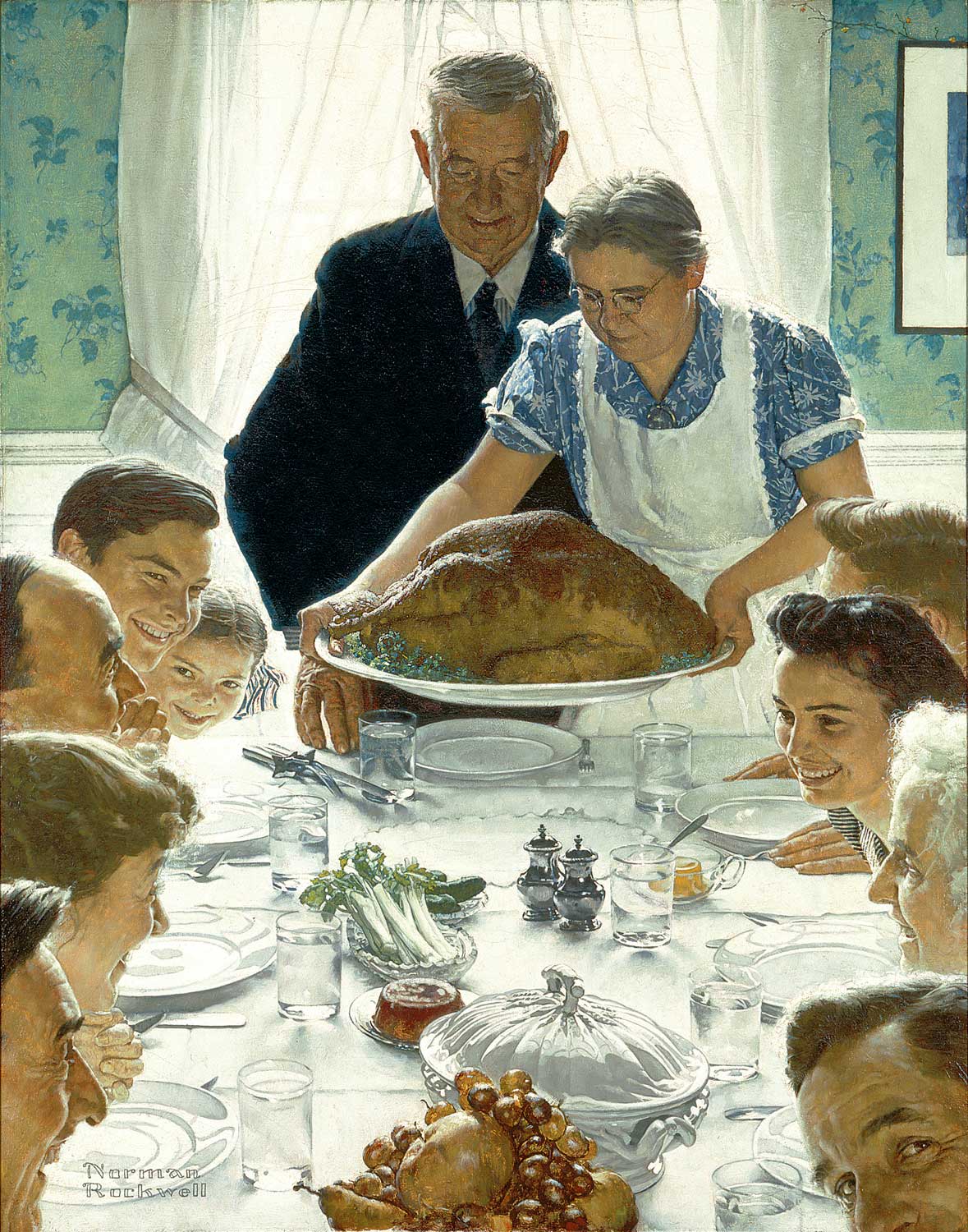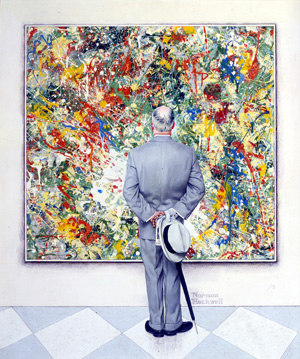- Proletarian: art relevant to the workers and understandable to them
- Typical: scenes of everyday life of the people
- Realistic: in the representational sense
- Partisan: supportive of the aims of the State and the Party
So the CIA, which was in charge of helping promote anti-communist culture, covertly supported abstract expressionism exhibits in the Museum of Modern Art like the aggressive paint splatter paintings of Jackson Pollock. In the 50’s the MoMA was head to toe in abstract art. In 1952, the CIA provided a 5 year grant to fund the loaning out of these art pieces to European museums which gave Pollock’s pieces international attention.
 |
| Norman Rockwell's Freedom From Want painting |
However, Pollock’s art style -- one that was considered radical -- didn’t enter the art world without resistance. Norman Rockwell who was the famous painter and illustrator that created the famous images of the Four Freedoms was caught in the midst of the artistic battle between realistic art and abstract art. Rockwell even went so far as to poke at the insurgence of abstract art seen below in a piece called The Connoisseur which is a mix of criticism and bravado as Rockwell painted the Pollock-style piece as Pollock would -- canvas on the floor with paint being splattered from above.

From this, it is clear how the Cold War created divides not just between nations, but even down to the cultural specifically artistic aspects of society.
Sources:
I think this post super intresting and is an aspect of the war's influence I had never even considerd beofore! I am personally a huge fan of Pollock and his work. I thought it was really important how you inlcuded that these more radical art movemtents gained popualtiry internationally by being granted to Europe by the U.S goverment. That is something I feel is quite unique about this war because I had never seen this amount of influence on art culture during any of the important wars previously.
ReplyDeleteI thought that this aspect of American life during the Cold War was fascinating to read about, as the ways that the government tried to garner public support through art is a different approach than normal propaganda. The fact that they could not afford even private artists to convey communist sympathies indicates how insecure the government was. Also, hearing that the CIA ran these programs is interesting because now, media and popular culture portray the CIA as stealthy spies, not government workers who used art as a "weapon." Upon further research, I learned that many of the artists themselves were considered outsiders due to their radical ways. It is kind of ironic to see "radical" artists like Pollock being used for government propaganda that is intended to promote anything but radical thinking.
ReplyDeleteSource:
https://www.independent.co.uk/news/world/modern-art-was-cia-weapon-1578808.html
http://www.bbc.com/culture/story/20161004-was-modern-art-a-weapon-of-the-cia